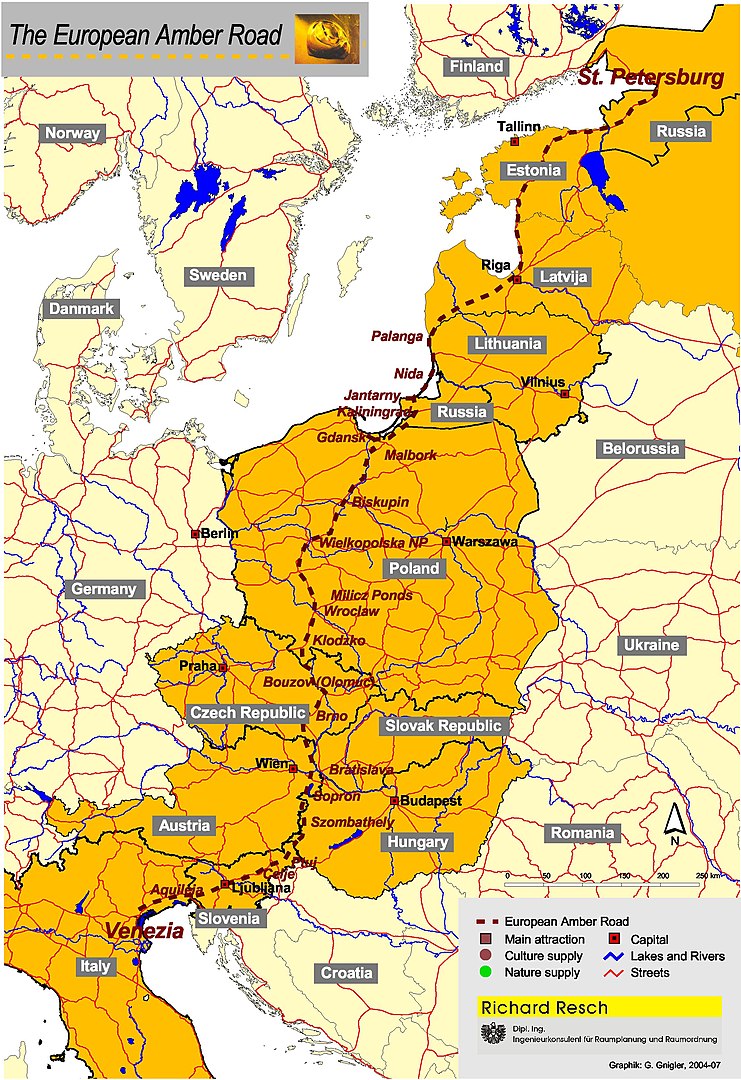The New Amber Road initiative can boost the economy of V4 countries
EnglishThe initiative is supported by the fact that it fits in the concepts of the European Union and the Visegrád Cooperation, and even strengthens them. The New Amber Road will connect important industrial, economic and transportation hubs.
The route of the ancient Amber Road within the Roman Empire is relatively well-known.
It passed through Italia, Pannonia and Noricum provinces within the empire, then crossing the limes in the territory of the so-called „Barbaricum”, it went on across the zone outside the administration of the Roman Empire.

The new initiative relates to the ancient Amber road to the extent that it follows approximately the same route.
The New Amber Road, however, is a rail freight corridor, and it will be built and operated in accordance with the conditions of the present.
The establishment of the freight corridor has been initiated jointly by four countries, Poland, Slovakia, Hungary and Slovenia.
The four EU Member States put forward the initiative to the European Comission in March, 2016 – says Ádám Sashalmi, from the Pallas Athéné Innovation and Geopolitical Foundation (PAIGEO) in his recent study in the HUG (Hungarian Geopolitics) magazine.
The New Amber Road will start from the port of Koper, run across Slovenia, including its capital, Ljubljana. Then it reaches Hungary, where traverses Zalaszentiván, and then branches off toward Sopron and Csorna. From Csorna, it continues to Rajka, and another branch to Budapest via Komárom, from where it goes as far as Kelebia, the Hungarian-Serbian border.
From Rajka and Komárom, it runs towards the north, crossing the Hungarian-Slovakian border. It traverses Bratislava, Leopoldov and Zilina. Then it continues in Poland, where it passes through Katowice and Krakow, and proceeds into two directions, one of them ending in Warsaw, and the other ending as far as Terespol, the Polish-Belarusian border, via Luków. Apparently, it will connect important industrial, economic and transportation hubs.
The initiative is supported by the fact that it fits in the concepts of the European Union and the Visegrád Cooperation, and even strengthens them.
The establishment of a north-south trade and transport corridor in the region matches the objectives of both the EU and the V4.
A positive consequence of the realisation of the New Amber Road may be an increase in trade between the four initiating countries. According to the data of the World Bank, the extent of trade between each other is currently low: by contrast, the value of trade with Germany measured in USD is much higher. According to current data, Hungary’s export to Slovakia accounts for 5 percent of total exports, while its export to Germany accounts for 27 percent of total exports.
The establishment of the new freight transport corridor may enhance the value of certain transportation hubs through which the New Amber Road runs.
It is particularly important for those that other corridors traverse, such as Koper, Ljubljana, Budapest, Bratislava, Zilina, Katowice, Warsaw or Terespol.
If established, the New Amber Road may bring about changes that will improve the competitiveness of the Central European region. It may represent development and breakout opportunities for the initiating countries.
However, there are several questions unanswered about the New Amber Road. It is unknown whether it will be able to mitigate the economic dependency of participating countries.
- Can increasing trade with China, Italy or each other counterbalance Gerrmany, and will Germany have a response to it?
- Can it enhance the Central European political cooperation, can the political weight of the region increase?
- Can it contribute to the growth of the region’s economic output?
- Can there be any negative consequences?
- Can a new dependency, this time from China, develop?
- Will Chinese goods force domestic products out of the market?
We will have answers to these questions after the initiative is realised.
